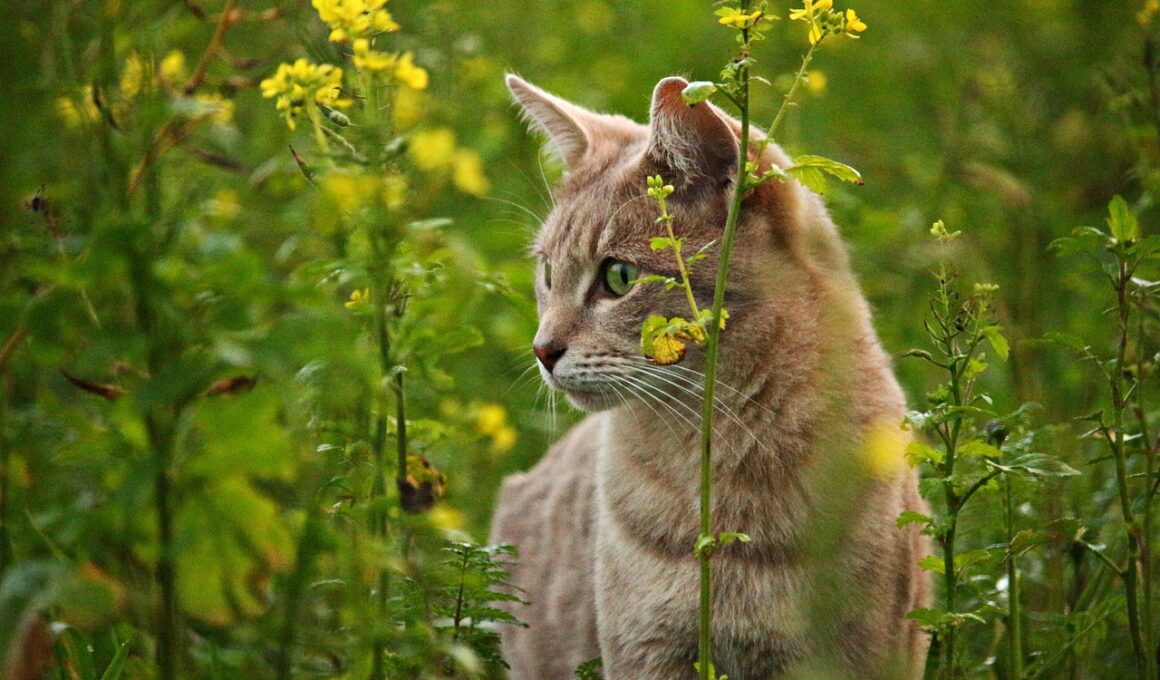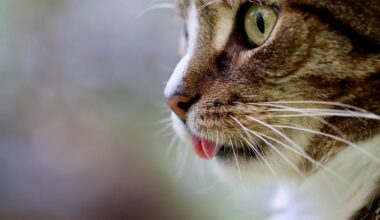Safe Succulents and Flowers for Cat Owners
When it comes to creating a cozy and vibrant environment for both cats and plants, safety should always come first. Many popular houseplants can be harmful to felines, so it’s crucial to choose plants that are safe for our furry friends. Among the best choices are various types of succulents, which not only bring beauty to the home but are also harmless to cats. Some notable options include the Echeveria, Haworthia, and Gasteria. These plants are not only safe; they also thrive with minimal care. Besides, they’re visually appealing and come in various shapes and colors. Moreover, having these plants can help purify the air and enhance your home decor. Before introducing any plant into your home, always conduct thorough research to confirm its safety for pets. Websites such as the ASPCA provide excellent resources to help pet owners determine which plants pose a risk. In addition to purchasing safe succulents, it’s also essential to monitor your cat’s behavior around plants, ensuring they don’t develop a habit of nibbling on anything they shouldn’t. Your feline’s wellbeing is paramount.
Understanding Toxic vs. Non-Toxic Plants
Understanding the difference between toxic and non-toxic plants is critical for all cat parents. As mentioned earlier, many common houseplants are unsuitable for cats. Toxic plants can cause a variety of health issues, ranging from mild gastrointestinal disturbance to severe reactions. For instance, lilies are often highly toxic to cats, leading to kidney failure. On the other hand, non-toxic plants can enhance your home without compromising your pet’s wellbeing. Aside from succulents, cat owners can safely introduce certain flowers into their homes. Examples of non-toxic flowers include roses, gerbera daisies, and petunias. These vibrant options can add color and fragrance to your living space without risking your cat’s health. When selecting plants, focus on varieties labeled as ‘cat-friendly’. This designation is often available at local nurseries or pet stores that specialize in plant safety. To verify a plant’s safety status, consider using your smartphone; simply search for the plant name alongside the terms ”safe for cats.’ ‘With diligence, your home can be a flourishing, safe haven for both you and your beloved pets.
In addition to flowers and succulents, herbs also offer fantastic choices for cat owners looking for safe plants. Various herbs not only enrich your cooking but are also cat-friendly. Some popular options include catnip, parsley, and basil. Catnip, in particular, is notable for its ability to stimulate your feline’s playful side and provide them with enjoyment. Your cat might not only safely interact with these herbs but might also find them quite enticing. Furthermore, herbs typically require minimal care, making them excellent choices for busy pet owners. They can be grown indoors or outdoors, depending on your living situation. When nurturing these herbs, consider using containers to prevent overly enthusiastic cats from digging in the soil. Ensuring any herbs you grow remain pesticide-free is essential for keeping your pets healthy. Moreover, placing pots in elevated areas can provide easy access for your cat without risking any mess. Overall, herbs like catnip serve dual purposes: beauty for your home and enrichment for your cat’s life, making them a smart choice in cat-friendly plants.
Tips for Maintaining a Cat-Friendly Plant Environment
Creating a cat-friendly plant environment requires thoughtful planning. One of the best strategies involves selecting plants that not only enhance your living space but won’t endanger your pets. Position your plants in locations that aren’t easily accessible to your curious kitty; high shelves or hanging pots can be great options. If inevitably, your cat gains access and starts nibbling on a plant, ensure that it’s a non-toxic variety. Regularly remove any dead leaves or debris from around the base as they can attract unwanted attention or curious paws. Furthermore, ensuring your plants are well-watered without overwatering is crucial for their health. Always check the soil moisture levels and adjust your watering schedule according to the seasons. Be mindful of any changes in your cat’s behavior after introducing new plants. If you notice signs of distress, consult with your veterinarian for immediate advice. Creating a secure and inviting environment for both you and your pets is entirely achievable with the right methods and preparations, ensuring that your home is both beautiful and safe for all inhabitants.
Additionally, regular grooming of your cat can help minimize the chance of them ingesting any plant material. By brushing their fur frequently, you can reduce the occurrence of hairballs and the likelihood of them getting curious about plants. Monitoring your cat’s behavior is key; if they seem overly interested in any particular plant, consider relocating it, ensuring their curiosity doesn’t lead to potential harm. Engaging your cat with toys and other activities can also divert their attention away from plants. By creating a stimulating environment with scratch posts and interactive toys, your cat will be less inclined to investigate your greenery. Moreover, consider crafting a designated cat-friendly area where your feline can explore safely. Placing safe plants within this space can create a delightful area for them to enjoy without risking ingestion of harmful plants. Some cat parents even choose to grow cat grass as a safe option for kitty munching. Ultimately, balancing your love for plants and your responsibility as a cat parent protects your pet while enriching your home.
Conclusion: Plant Safety for Cat Owners
As a devoted cat owner, your priority should always lie in ensuring the health and safety of your furry friend. The joy of having indoor plants shouldn’t come at the expense of your pet’s wellbeing. By educating yourself on safe succulent and flower options for your home, you can enjoy a thriving indoor garden right alongside your beloved cat. Make it a regular habit to refer to reputable resources to confirm any plant’s safety status before bringing it home. Furthermore, establishing boundaries and monitoring your cat can effectively prevent mishaps and ensure that both plants and pets coexist healthily. Choosing alternatives such as non-toxic flowers and succulents not only beautifies your space but also allows your cat to roam freely without worry. The right selections and proactive measures will ensure you have a lush, beautiful home that is entirely safe for your feline friend. With attention to care, research, and awareness, you can maintain an enchanting environment filled with greenery while keeping your pet safe. Your home should be a joyful and harmonious sanctuary for everyone who lives within.
Lastly, consider connecting with fellow cat owners who have also embraced the challenge of creating a safe home for their pets while incorporating plants. Online communities and forums can offer invaluable insights into the best practices for maintaining plant safety around pets. Sharing experiences and recommendations can introduce you to new, safe plant varieties you might not have considered otherwise. Engaging in these conversations can also provide much-needed support and encouragement in your parental journey. By exchanging knowledge, you not only enhance your understanding of cat-safe plants but can also inspire others to do the same. The more we learn and grow together, the better equipped we are to provide nurturing homes for our beloved pets. So take the time to connect and share your experiences with others, celebrating the joy of being a cat parent alongside the beauty of maintaining a green, plant-rich environment. Embrace the adventure of exploring plant varieties suitable for your home while continuously ensuring that every choice made prioritizes the health and happiness of your feline companions.


